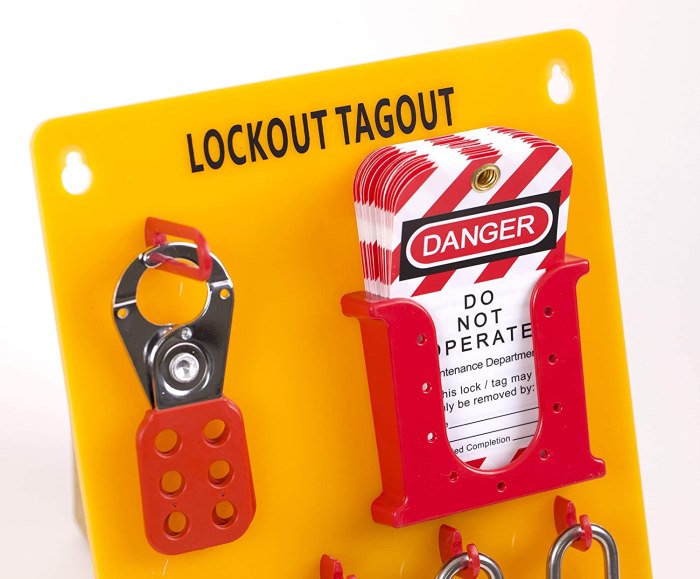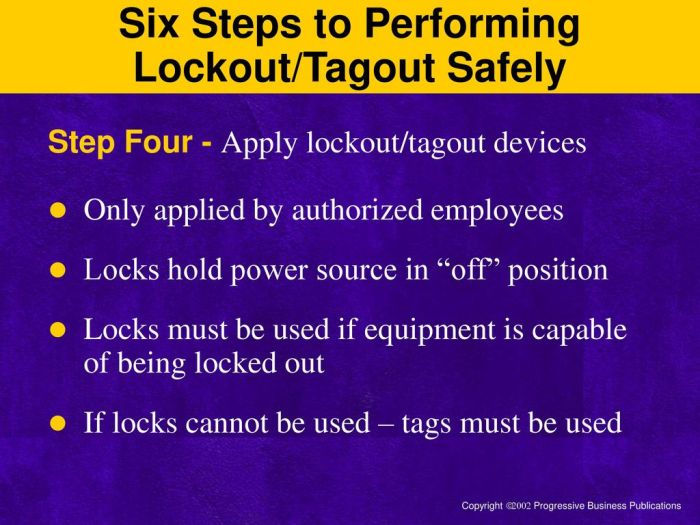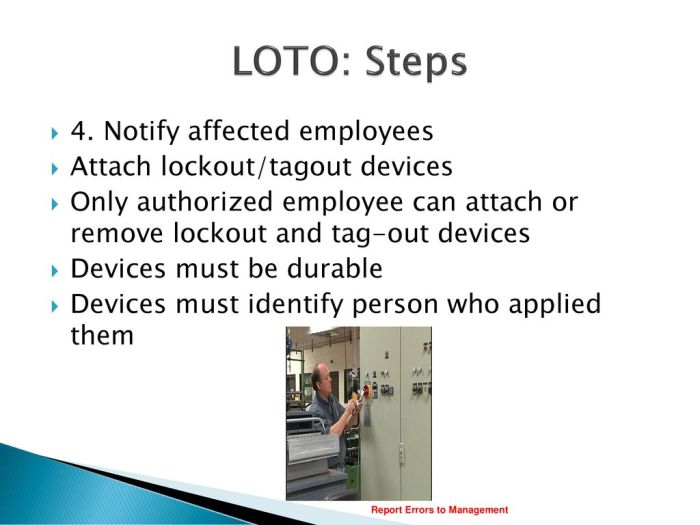Who is authorized to remove a lockout/tagout from a machine? This question is crucial for ensuring safety in industrial settings. In this article, we will explore the roles and responsibilities of authorized personnel, the removal procedures, and the consequences of unauthorized removal.
Authorized personnel are individuals who have received training and certification to safely remove lockouts/tagouts. They are typically responsible for maintaining and repairing equipment, and they must have a thorough understanding of the lockout/tagout procedures.
Who is Authorized to Remove a Lockout/Tagout from a Machine

Lockout/tagout procedures are essential safety measures that prevent the unintentional operation of machinery and equipment during maintenance or repair work. The removal of these devices must be carried out by authorized personnel who have been trained and certified to do so.
Authorized Personnel
Authorized personnel are individuals who have the knowledge, skills, and experience to safely remove lockouts/tagouts. They are typically responsible for the following tasks:
- Verifying that the machine is safe to operate.
- Removing the lockouts/tagouts.
- Re-energizing the machine.
- Documenting the removal process.
Job titles or qualifications that may qualify personnel for this task include:
- Maintenance technician
- Electrician
- Mechanic
- Safety officer
Authorized personnel must receive training and certification that meets the requirements of the Occupational Safety and Health Administration (OSHA) or other applicable regulatory agencies.
Removal Procedures
The following step-by-step procedures should be followed when removing lockouts/tagouts:
- Verify that the machine is safe to operate by visually inspecting the area and ensuring that all guards and safety devices are in place.
- Remove the lockouts/tagouts from the energy isolating devices.
- Re-energize the machine by turning on the power or opening the valves.
- Operate the machine for a short period of time to verify that it is functioning properly.
- Document the removal process, including the date, time, and authorized personnel involved.
Proper communication and coordination are essential during the removal process. All authorized personnel involved should be aware of the plan and their responsibilities.
Documentation and Recordkeeping
It is important to document the removal of lockouts/tagouts to ensure compliance with safety regulations and to provide a record of the work performed.
The following information should be recorded:
- Date and time of removal
- Machine identification number
- Name of authorized personnel who removed the lockouts/tagouts
- Any observations or findings during the removal process
Accurate and complete records should be maintained for a period of time specified by the regulatory agency or company policy.
Consequences of Unauthorized Removal, Who is authorized to remove a lockout/tagout from a machine
The unauthorized removal of lockouts/tagouts can have serious consequences, including:
- Injury or death to personnel
- Damage to equipment
- Fires or explosions
- Legal liability
It is essential to adhere to established procedures and protocols to ensure the safety of all personnel and to prevent accidents.
Key Questions Answered: Who Is Authorized To Remove A Lockout/tagout From A Machine
Who is authorized to remove a lockout/tagout?
Only authorized personnel who have received training and certification are permitted to remove lockouts/tagouts.
What are the consequences of unauthorized removal?
Unauthorized removal of lockouts/tagouts can result in serious injuries or even death. It can also lead to legal and financial penalties.


